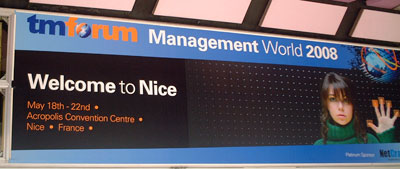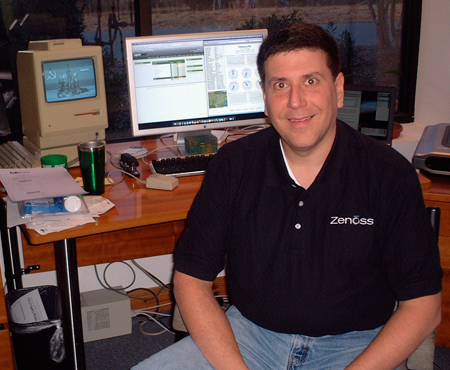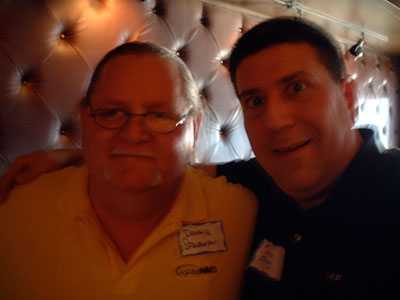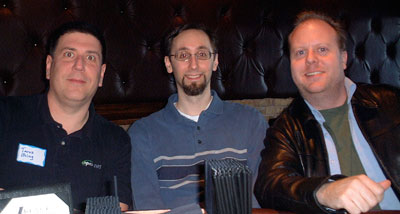I’ve been to Texas at least a hundred times. Now, if you subtract out those trips that just involved the DFW airport, it’s still over twenty, but not once have I been to Austin.
Growing up in North Carolina, I grew up watching Austin City Limits on PBS and many of the people I know in Texas speak of Austin in glowing terms, so I’ve always wanted to visit.
The opportunity came when I was invited by whurley to visit his barcampESM event. We don’t have much of a budget for events like this, but as luck would have it I have to be in San Antonio next week, so I figured I could fly to Austin, visit barcamp, and then drive down.
I was a little confused as to when the event would occur, since there wasn’t much information on the web site, and all it said for the longest time was “18-20 January in Austin”. I didn’t want to make my travel plans at the last minute due to higher costs, so seeing that there was a direct flight from RDU to AUS the evening of the 17th, I figured I’d just flight out then and if nothing was going on during Friday I’d just visit some companies in the Austin area.
Austin is a hotbed of technology companies, with some large established companies and lots of startups. I was able to visit three of them and they were all within a couple of miles of each other in an area just north of the city.
RenewData was my first stop. They have a really interesting business. They escrow electronic documents such as e-mail for clients, and should those clients get subpoenaed in a court case, they are able to retrieve the relevant information to comply with the court order.
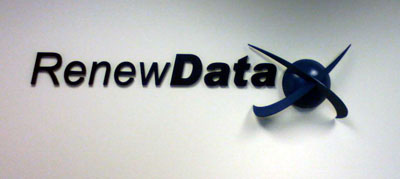
Their data center is more secure than many I have been in, since the information contained within could be very sensitive. I can’t say much more than that since every visitor is required to sign an NDA.
The next stop was the Austin studio of Bioware. I don’t play many computer games, but one of the last ones I bought was Neverwinter Nights, so I was jazzed about getting to spend some time there.
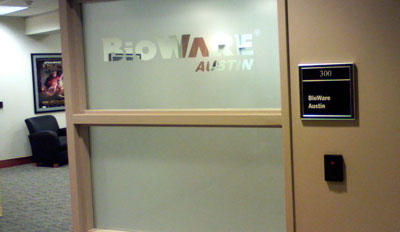
A successful video game can gross more than a blockbuster hollywood movie (e.g. Halo 3) and with the advent of broadband to the home the business model has expanded to include subscription-based online play. In order to support these massively multiplayer online role-playing game (MMORPG) environments, a lot of server and network resources are required. If they are slow to respond or unavailable, it directly impacts the user experience and can result in players leaving the game and a loss of revenue.
Bioware is working with LucasArts to create what will be one of the largest MMORPGs ever made, and thus their management solution must be able to scale. I can’t tell you much more beyond that. In this case it is not due to an NDA but due to the fact that the guys wouldn’t give me any details (and, yes, I did plead). I assume it will be Star Wars related. They did take me to lunch though at Trudy’s. Since I live in an area of North Carolina with a large Latino population, I take my Mexican food seriously, and although Mexican food is not Tex-Mex I had a wonderful lunch. I love being in a state where avocados are plentiful.
My last visit was to NCSoft. We’ve been working with these guys for a number of years, and it was a nice continuation of the day’s “gaming” theme. If I can only get to Blizzard I should have the industry covered. (grin)
NCSoft produces games such as City of Heroes/City of Villains, the ever popular Guild Wars series and Tabula Rasa. I believe they are the largest independent online gaming company in the world. The lobby was pretty cool:
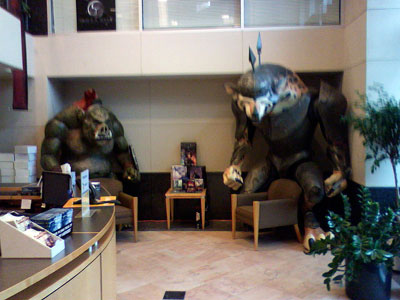
I travel to a lot of places, and the vibe at NCSoft was one of the best I’ve experienced lately. Everyone seemed excited to be there. Of course, as with all the best companies they use OpenNMS to monitor their network (grin).
I got to meet a bunch of people (and for you Tabula Rasa fans I walked by Richard Garriott’s office) and then we went out to Waterloo for drinks. Ah, Shiner on tap.
The one theme I noticed throughout the day was the presence of a services model. All three of these companies based their main revenue on providing services. As a pure services company, OpenNMS is often criticized, at least within the investment community, but here are examples of services companies that are thriving. Of course the issue of scalability is always at the top of the list, which is why OpenNMS can be a good fit. OpenNMS was designed to monitor tens of thousands of services from a single instance. Other solutions scale by adding servers at a much lower number, and while you can run OpenNMS in a distributed fashion, that need is usually only required in the largest of networks. You don’t really want to have so many servers that you need a management solution for your management solution.
My last meeting of the day was one I’ve looked forward to for some time. I came across Michael Coté’s blog last year, and we’ve been keeping up an e-mail correspondence since then. As avid travelers and members of the American Airlines AAdvantage program who work to maximize our miles, we had some things in common, and since Coté is a man who likes to listen and I am a man who likes to talk, it was a good fit.
He took me to Artz Rib House, which reminded me of some of my favorite BBQ places back home. With live music in the background, good food and Shiner on the table, it was a nice ending to a fun day. We talked pretty bluntly about the industry and it was nice to spend time with someone who wasn’t focused just on management. He promised to introduce me to some people such as the folks at Alterpoint, and I got to talk about my determination to put “free” back into “open source software”.
When he dropped me back at the hotel we ran into whurley in his Incredible Hulk-green Scion B, where he was dropping off Doug McClure and John Willis (one of the barcampESM organizers). The latter two disappeared into the elevator before I could catch ’em, but I would see them again the next day at barcampESM.
